
Pieris japonica: 5 ideas for successful combinations
Discover our ideas and inspirations
Contents
Pieris japonica, also called Japanese andromeda, is a bush for heather soil with evergreen foliage. It is prized for its young shoots, which take bright red hues, and for its flowering of numerous small bell-shaped flowers, white or pale pink.
In the garden, it thrives in partial shade in fairly acidic soil and benefits from being planted with other plants to reveal its full beauty.
Discover our ideas for pairing Pieris in the garden, especially with other perennials and bushes.
In a bed of acidic soil
Pieris is a bush for heather soil that therefore thrives in partial shade, in rather acidic substrates. Cultivate it by pairing with other plants that appreciate the same environment. It is ideal, for example, to accompany the colourful flowering of the Rhododendrons or Azaleas. Pieris will also go wonderfully with the splendid flowering of Kalmia latifolia. This bush offers in spring delightful small pale-pink flowers, often shaded with darker pink to purple. Also enjoy the pleasant fragrant flowering of Daphne odora. You can also plant Japanese maples, which will charm with both their structure and their foliage. Also discover Crinodendron hookerianum, an evergreen bush whose flowers take the shape of small red lanterns. Likewise, the acidic pH of the soil would allow you to enjoy the beautiful blue flowering of a hydrangea.
To strengthen the woodland-floor atmosphere brought by these bushes, you can pair them with other shade plants, such as ferns, Brunnera, Heuchera, hostas, Ophiopogon…
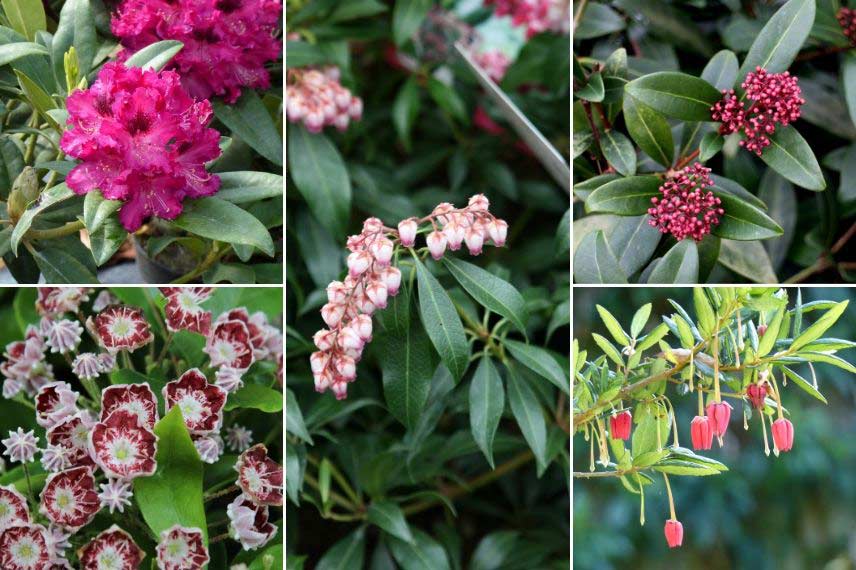
Pair Pieris with other heather-soil bushes: Rhododendron ‘Nova Zembla’, Kalmia latifolia ‘Tad’, Pieris japonica ‘Katsura’, Skimmia japonica ‘Rubella’ (photo Dominicus Johannes Bergsma) and Crinodendron hookerianum
For a striking flower bed in vivid colours!
As Pieris’s young shoots take on a beautiful red hue in spring, use this to create a striking bed! Integrate plants with red flowers and leaves; their vivid colour in garden will be impressive and draw attention. Plant Pieris japonica preferably towards the back of the bed. We particularly recommend Pieris ‘Forest Flame’, which offers leaves with changing colours: young shoots are bright red, develop into pink then cream, before becoming dark green. You can pair it with the foliage of Photinia x fraseri ‘Red Robin’, Nandina domestica ‘Fire Power’ or with the superb flowering of an azalea, such as variety ‘Wallowa Red’. Plant in front of these bushes red or orange-flowering tulips, the benoite Geum chiloense ‘Mrs Bradshaw’, Aquilegia canadensis ‘Little Lanterns’, peony ‘Early Scout’ or Euphorbia griffithii. Also enjoy colourful foliage of Uncinia rubra, a small perennial that closely resembles grasses. For this type of bed, we recommend not using red exclusively but playing with shades — include orange and coppery flowering and small touches of yellow.
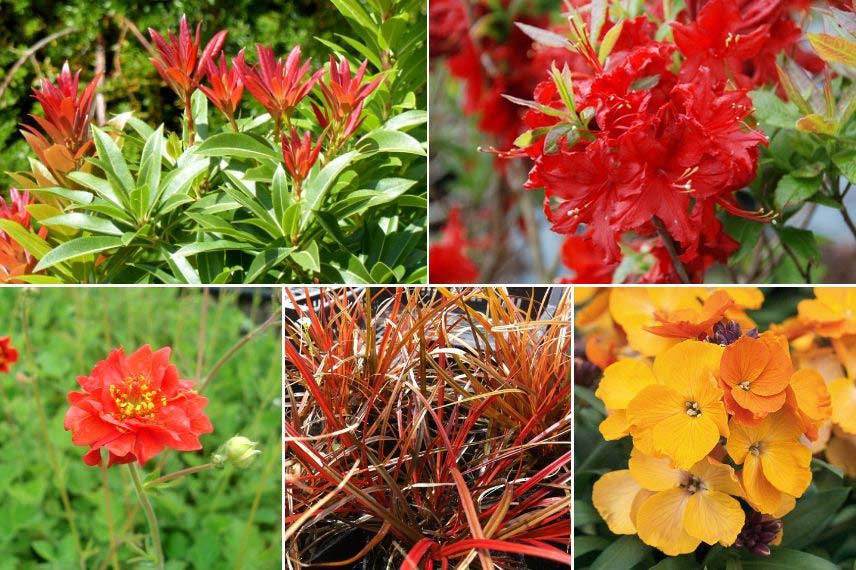
Make the most of Pieris to create a bed with warm, luminous tones: Pieris japonica ‘Wakehurst’, azalea ‘Wallowa Red’, Geum chiloense ‘Mrs Bradshaw’, Uncinia rubra and Erysimum ‘Rysi Copper’
Discover other Pieris
View all →Available in 0 sizes
Available in 3 sizes
Available in 1 sizes
Available in 2 sizes
Available in 1 sizes
Available in 1 sizes
Available in 2 sizes
Available in 1 sizes
Available in 1 sizes
Available in 1 sizes
For a Japanese-style garden
Being a bush of Asian origin, Pieris is ideal for integrating into a zen, Japanese-style garden. Work the garden to give it a harmonious, balanced look. Place a few rocks and provide a large central area with gravel. This area should be levelled and raked, then you can draw lines and undulations. Integrate on the outside of this space a few Japanese maples, for their majestic architecture and very finely divided foliage. Also consider Ilex crenata, which you can prune into cloud shapes. To cover the soil and embrace the shape of the rocks, use helxine or scleranthus; these small plants form a tapetum that very much resembles moss! Also enjoy ephemeral spring flowering of a Japanese cherry. You can also include ericaceous plants: rhododendrons, azaleas, Nandina domestica… These plants will help create a very relaxing garden! Optionally add some decorative elements, such as statues, lanterns, or a gate… but don’t overdo it, as the idea is to preserve a relatively uncluttered atmosphere!
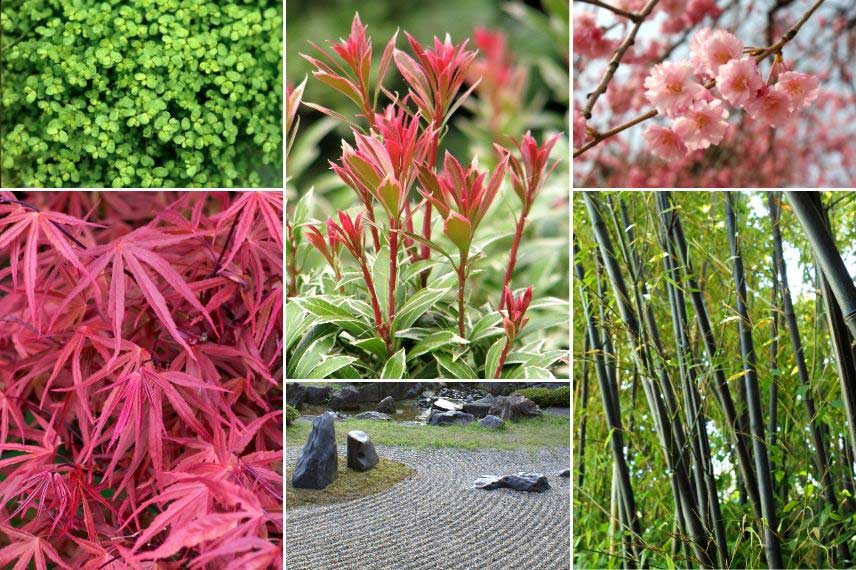
Pieris is ideal for integrating into a Japanese garden: helxine, Pieris japonica ‘Little Heath’ (photo Agnieszka Kwiecień, Nova), flowering cherry Prunus serrulata (photo Kropsoq), Acer palmatum ‘Red Pygmy’ (photo Dinkum), and black bamboo Phyllostachys nigra
Informal hedge
Pieris can obviously be used to create a free-form hedge with a fairly natural, country-style look. It is a bush with advantage of being evergreen, remaining decorative all year round. Thus, in a hedge it will provide screening even in mid-winter! In addition, it will bring colour to a hedge among other bushes with more ordinary foliage. Among varieties, avoid smaller ones and choose instead a large-growing variety such as Pieris ‘Forest Flame’… or, to add diversity in foliage, opt for Pieris ‘Flaming Silver’, with leaves marginate with cream-white. You can plant it alongside Viburnum, privet, Amelanchier, hornbeam, Abelia, elder… Also discover hawthorn ‘Paul’s Scarlet’, with pink flowers, ideal for adding a splash of colour among this foliage. You can also make use of spirea, which forms a rounded bush bearing delicate white or pink flowering in spring or summer.
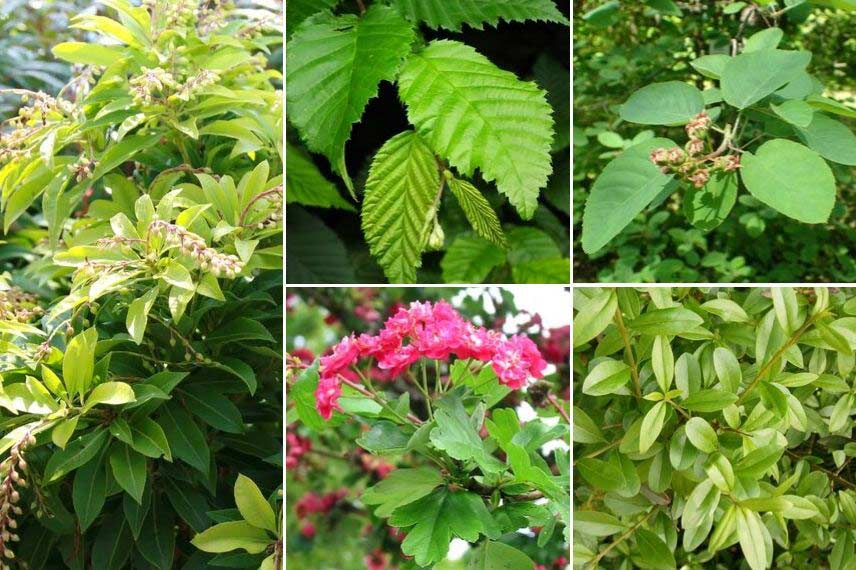
You can combine Pieris with other bushes to create a free-form hedge. Pieris japonica ‘Mountain Fire’ (photo David J. Stang), Carpinus betulus, Amelanchier canadensis (photo Krzysztof Ziarnek, Kenraiz), Crataegus laevigata ‘Paul’s Scarlet’ (photo Sabencia Guillermo César Ruiz), and Ligustrum vulgare (photo Meneerke bloem)
With other spring-flowering plants
Pieris bears many small bell-shaped flowers in spring, between March and May, generally white. Discover in particular the superb Pieris japonica ‘Debutante’, which produces abundant white flowering, or variety ‘Valley Valentine’, which offers pink-red flowering. Use Pieris to create a lovely backdrop for a border. In front of it, plant plants that offer light, delicate flowering in spring! You can, for example, plant spring bulbs, such as daffodils, tulips, fritillaries or grape hyacinths. Also make use of Pasque flower (Pulsatilla vulgaris), Chionodoxa, Brunnera macrophylla, or Lathyrus vernus (perennial sweet pea)… Pieris is also ideal to accompany flowering of oriental hellebores. They offer graceful, refined flowering, with five petals on single forms, or many more on double-flowered varieties. They are available in a superb palette of colour: white, green, yellow, pink, red, purple, sometimes almost black (Hellebore ‘Black Chocolate’), with in the centre a bouquet of soft yellow stamens. Some have petals speckled with small darker spots, which adds depth to the flowering.
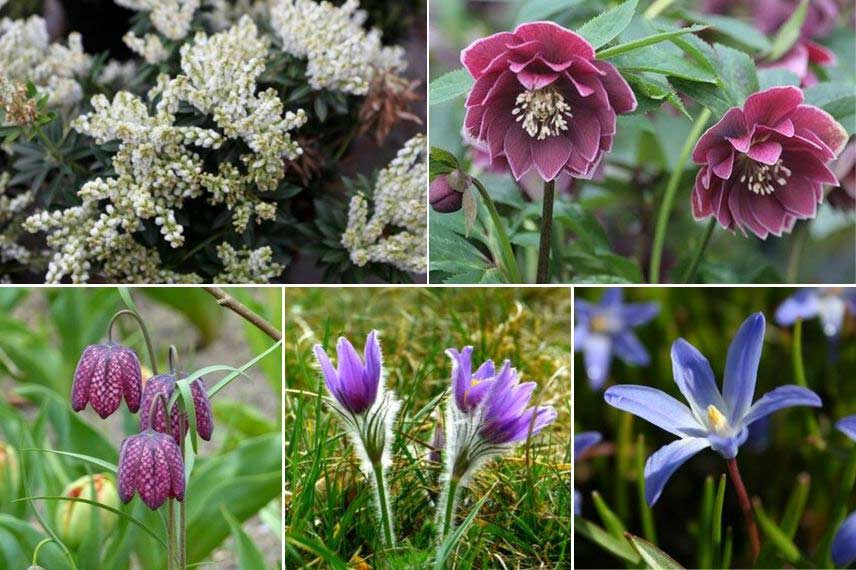
Make the most of Pieris flowering to create a beautiful late winter–early spring scene! Pieris ‘Debutante’, Hellebore orientalis ‘Double Aubergine white-edged’, Fritillaria meleagris, Anemone pulsatilla and Chionodoxa luciliae (photo Halava)
- Subscribe!
- Contents
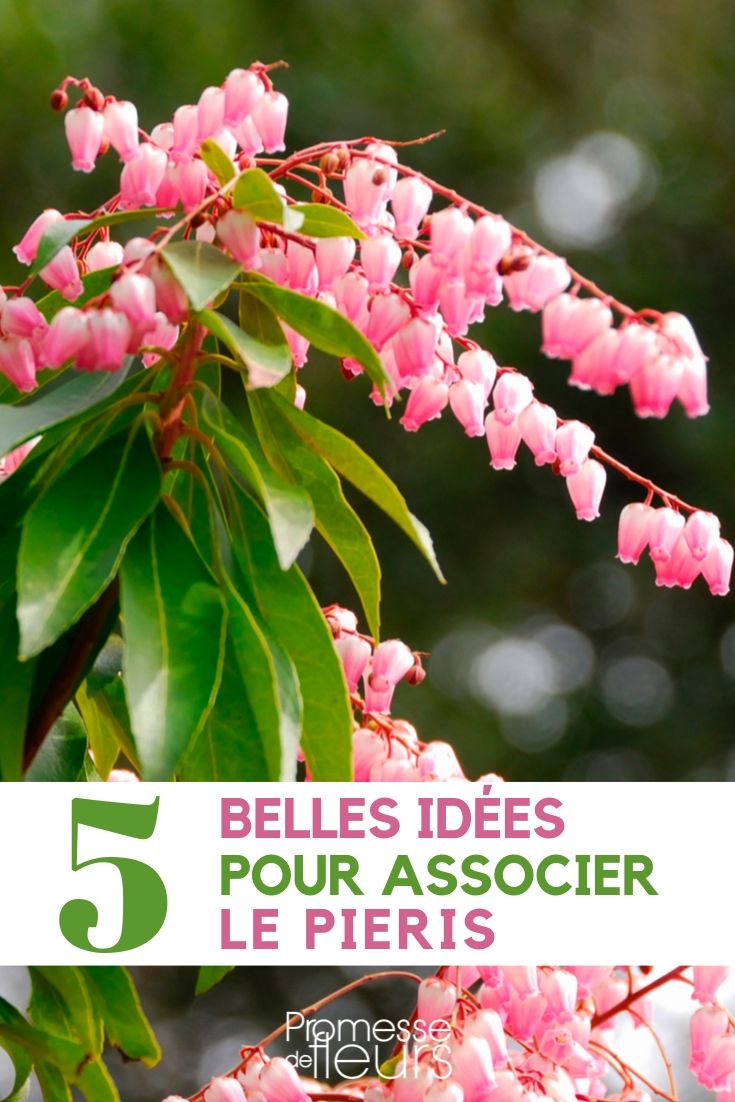































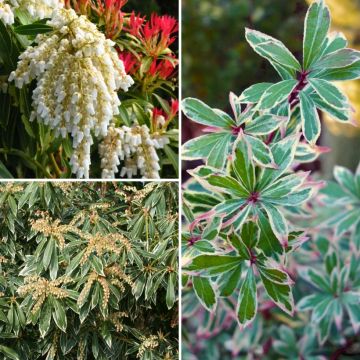
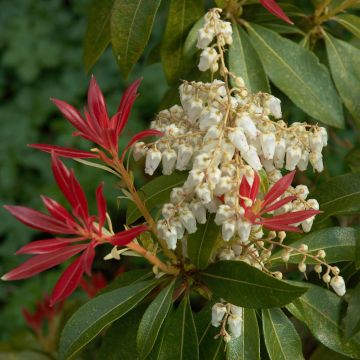

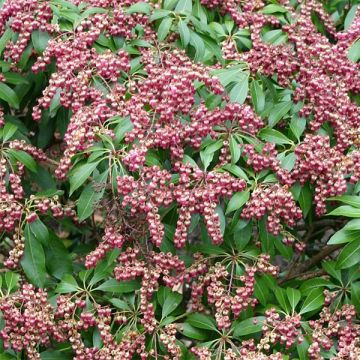
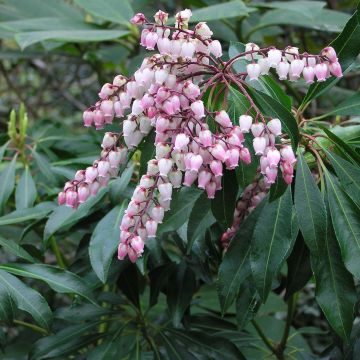
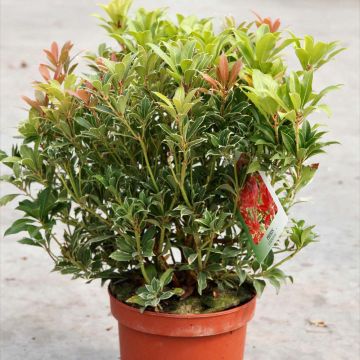
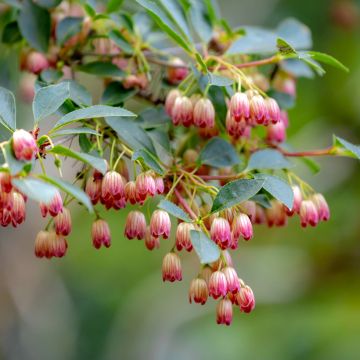
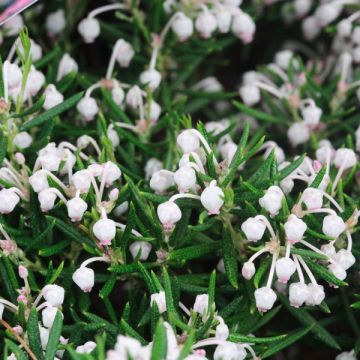
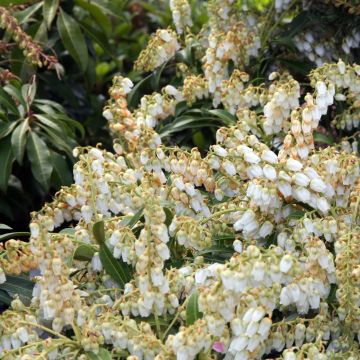

Comments